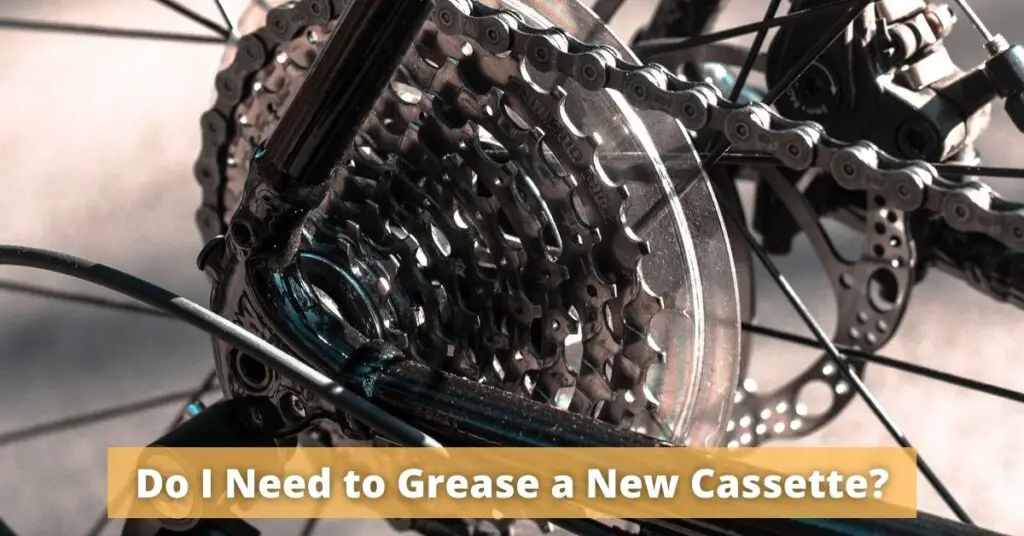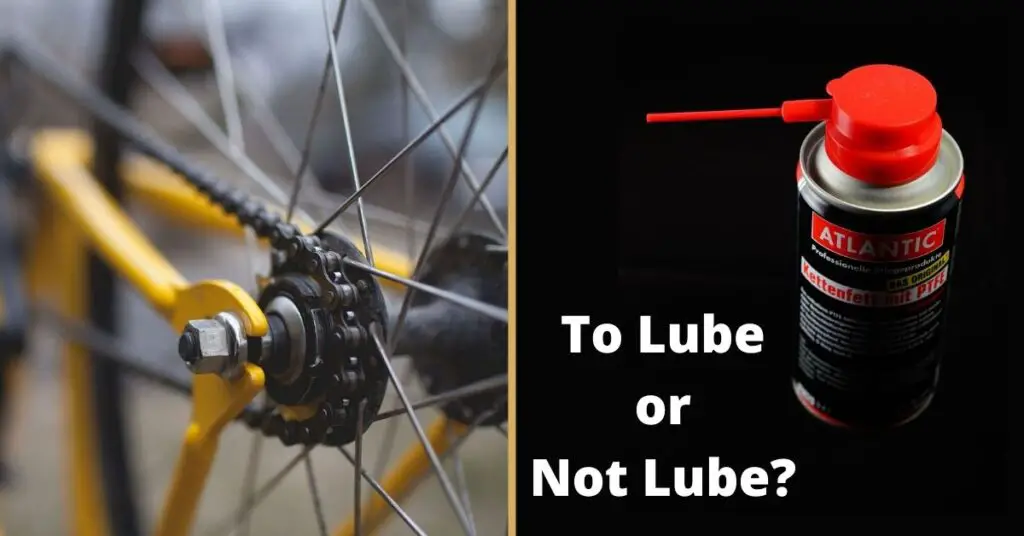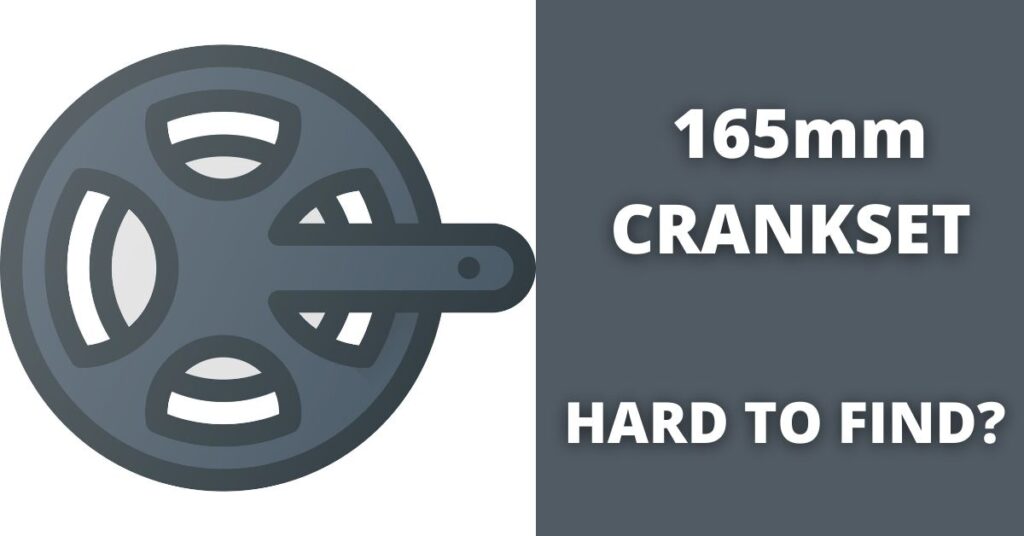We all know how important it is to keep our cassettes in good condition so we can have smooth rides because a happy cassette is a happy bike. And greasing our cassettes is one of the ways to keep it functioning well.
There will come a time, however, when the cassette will need to be changed, probably because it is worn or damaged. After installing and solving that issue, you’re immediately faced with another; should it be greased or not?
In this article, well be answering this question thoroughly and clearing your confusion. We’ll also be discussing other related topics to this so you can be well equipped with information about lubing cassettes.

Do I Need to Grease a New Cassette?
Greasing a new cassette is not necessary, and it should even be avoided for several reasons. The cogs in your cassette do not need to be greased as greasing will not improve its functions. It will only attract dirt and grime to your cassette which will cause a lot of friction and wear it out faster.
Since your chain is lubed, the cogs on your new cassette will pick up lube from it. This is enough to keep them running smooth and from rusting. Applying more grease is unnecessary and will attract grime.
This is why you have to ensure that your bike chain is properly lubricated at all times. Friction between your chain and cassette cogs can wear out your cogs faster and destroy your chainring.
Though your cogs do not need to be lubricated, the hub you’ll be attaching the cassette to and the lockring thread on the cassette need to be greased.
Let’s discuss more on why they need to be greased and what to grease them with.
Why You Should Apply Grease between Your Bike Cassette and Hub?
1- To Prevent Friction
Proper lubrication is always required if two metals are going to be constantly in touch. This is to prevent friction.
When installing new cassettes, you must ensure the freehub is adequately greased before attaching the cassettes to prevent creaking noises that arise from friction. This is more important if the hub is made of steel.
Copper grease works fine. You can also use Phil Wood’s waterproof grease or anyone you fancy.
2- To Prevent Rust
Greasing the boundary between your cassette and hub also prevents your hub from rusting.
When the freehub rusts it can wear out the cassette and make it rust faster. So greasing this boundary is a way of protecting your cassette.
Greasing also ensures that your cassette comes off easily when you want to detach it from the hub for cleaning or replacement. Lack of grease can make the cogs of your cassette bite into the splines of the freehub body.
Should I Grease My Cassette Lockring Thread?
Yes, you should. When installing a new cassette, greasing the locking is very essential. It is the lockring that keeps the cogs of the cassette in place on the freehub and greasing it improves its function.
1- Greasing Prevents It from Rusting
Because lockrings are exposed to the elements while riding, they are more prone to dirt and rust.
To prevent this, they should be properly maintained and greased regularly. This is more important when new cassettes are being installed.
The lifespan of your cassette could also depend largely on how well you treat your lockring. Your cassette could easily rust when your lockring is rusted since the lockring is connected to it.
2- Greasing Helps It Come Off Easily
Your cassettes need to be thoroughly cleaned regularly and to do this, you would need to unscrew the lockring to detach the cassette from the freehub.
Same with replacing it. This could be very difficult if you do not grease your lockring regularly.
Can I Use Chain Lube on Cassette?
Yes, you can use chain lube on your cassette. It helps it stay lubricated and last longer. You can use chain lube on your freehub body before installing the new cassettes and you can also put a few drops into the cassette before threading the lockring through it.
Don’t forget to grease the inner part of the chain, as this is where the cogs get their lubrication from.
Are New Cassettes Pre-lubed?
Bike cassettes are best used dry so they do not come pre-lubed. Some cassettes like the SRAM XX1 come with their internal threads greased from the factory but the cogs aren’t lubed.
This further establishes that cassettes do not need to be greased after they are installed and greasing doesn’t necessarily improve their function.
What Can I Use to Clean My Bike Cassette?
Cleaning your cassette enables it to function properly, last longer, and also ensures the longevity of other major components like the rear derailleur, hub, and chain.
The materials for cleaning bike cassettes are affordable and easily available.
1- Degreasers
You can use degreasers to clean your cassette. Degreasers remove the grease and oil that your cassettes have accumulated from the chain over time.
There are lots of degreasers like WD-40 that you can use, just pick the one you like.
2- OMS
Odorless mineral spirits are very efficient when it comes to cleaning bike components. They get rid of every spot, grime, and dirt that is on your cassette.
The most important thing is they do not cause harm to metals so your cassette can be soaked in it as long as you want. And the more it gets soaked, the more the oil and grime on it loosens and drops off.
Another great thing about mineral spirits is that you can use them again.
After removing your cassette from mineral spirits and getting it properly cleaned. Leave the spirits for a while and the grime will settle at the bottom of the container.
Just pour the spirit into a bottle and leave the dirt out. You can use the mineral spirit to clean another time.
3- Dish Soaps
You can also use dish soaps to clean your bike cassette. Dawn is a great example. It cuts into grease well and cleans it thoroughly. It doesn’t have to be dawn, however, any dish soap will work fine.
4- Kerosene
Some riders use kerosene to clean their chains and cassette because it is cheaper and can be reused. It also leaves an oily film on your cassette and gives it a shine. The downside is, it smells and can remove the lubricant in your hub if it gets to it.
So make sure the kerosene doesn’t get to your hub while cleaning your cassette. It would be better to remove the cassette from the hub before cleaning or use a toothbrush so you have better control of where the kerosene gets to.
How Can I Clean My Bike Cassette?
You can clean your bike cassette in two ways. You can either clean it on the rear wheel without detaching it or remove the cassette entirely before cleaning.
Method 1: Cleaning Your Bike Cassette without Removing It
YOU’LL NEED
1- Cassette brush
2- Degreaser/cleaner
3- Clean rag
4- Water
STEPS
STEP 1– Remove your rear wheel and set it somewhere you can easily work on it. Maybe a workbench or between your laps while you’re sitting.
STEP 2- Spray your cassette with some degreaser and let it sit for a couple of minutes. Maybe 3 minutes. You can use a cleaner instead if you want. Or use both.
STEP 3- Use a brush to clean between the sprockets, paying attention to every space and hole.
STEP 4- Spray the cassette with water lightly and repeat the process.
STEP 5- Now, spray the cassette with water thoroughly when you’re sure it’s all clean.
STEP 6- Wipe it down with a clean rag and air dry it for a couple of minutes. Don’t forget to clean the chain. If the chain is dirty, it will only get your cassette dirty again after cleaning it.
Method 2: Cleaning Your Bike Cassette by Removing It
This second method involves removing your cassette from your bike and we understand that not everyone can do that. We’ll do a walkthrough in easy steps so you can do it without stress.
Removing Your Cassette
This one involves a thorough cleaning and ensures that every grime and dirt is removed and your cassette functions like new again. It takes time, energy and can be stressful but it is worth it.
YOU’LL NEED
1- Chain whip
2- Lockring remover
3- Crescent wrench
STEPS
STEP 1- Remove the rear wheel from your bike and remove its quick-release skewer.
STEP 2- Use the chain whip to hold the cassette in place so it won’t spin while you’re trying to wrench off the lock ring. Wrap the chain whip around one of the larger cogs.
STEP 3- Insert the lockring remover into the top of the cassette. Let it sit within the lockring correctly. SRAM lockring remover also works for Shimano lockrings but Campagnolo uses a different remover. So use one that fits your lockring.
STEP 4- After securing the lockring remover. Use the crescent wrench to turn the lockring remover anti-clockwise undoing the lockring. Ensure you’re holding the chain whip in place with your other hand so the cassette won’t spin.
STEP 5- Turn the wrench until the lockring is loose and use your hand to finish undoing it. Your cassette would come off. Lay the cogs and spacers in order so you can install them back easily and correctly.
Now that you know how to do this, we can move on to the cleaning process
The Actual Cleaning
YOU’LL NEED
1- Degreaser/cleaner
2- Brush
3- Bucket
4- Clean rag
5- Water
STEPS
STEP 1- Remove your bike cassette. Some come off as a piece and some are made of individual cogs.
STEP 2- Pour some degreaser and water into a bucket. You can do a 1:1 ratio or use more degreaser than water if the cassette is very dirty. You can also use a cleaner if you want or undiluted OMS.
STEP 3- Put the cassette into the bucket and let it sit for around 15 minutes. If the cassette doesn’t separate into individual cogs you can leave it for a longer time so that the solution can work well into every part.
STEP 4- Use an old toothbrush to scrub every part of the cassette well. Clean each cog thoroughly and use a rag to floss between the cluster of cogs on the cassette. Spray more degreaser on the cassette if need be.
STEP 5- Wipe the cassette clean with a clean rag and reinstall it. Do this correctly and don’t forget the spacers between the spacers gears.
How Often Should I Clean My Cassette?
Cleaning your cassette is a little bit of work but it helps it to function well. You should do this at least once in 5 or 6 months but it all depends on your riding frequency, weather conditions, mileage, and how well you maintain your bike.
If you ride in wet conditions where you can’t avoid mud splashes and riding in the rain then you need to clean more often.
If you wash your bike generally and spray with water often, then your cassette would need thorough cleaning less often.
Final Thoughts!
Bike cassettes function better when they are dry and clean. They do not need to be lubricated as this will only attract dirt and grime to them, make them sticky, and malfunction.
In fact, instead of greasing, bike cassettes need to be degreased and cleaned regularly. This ensures they last longer and function the way they should.
You can however lubricate the freehub body it will be attached to and also the lockring thread. This is best done when the cassette is removed from the hub. You can’t properly grease these parts when your cassette is already installed.
Cheers!





